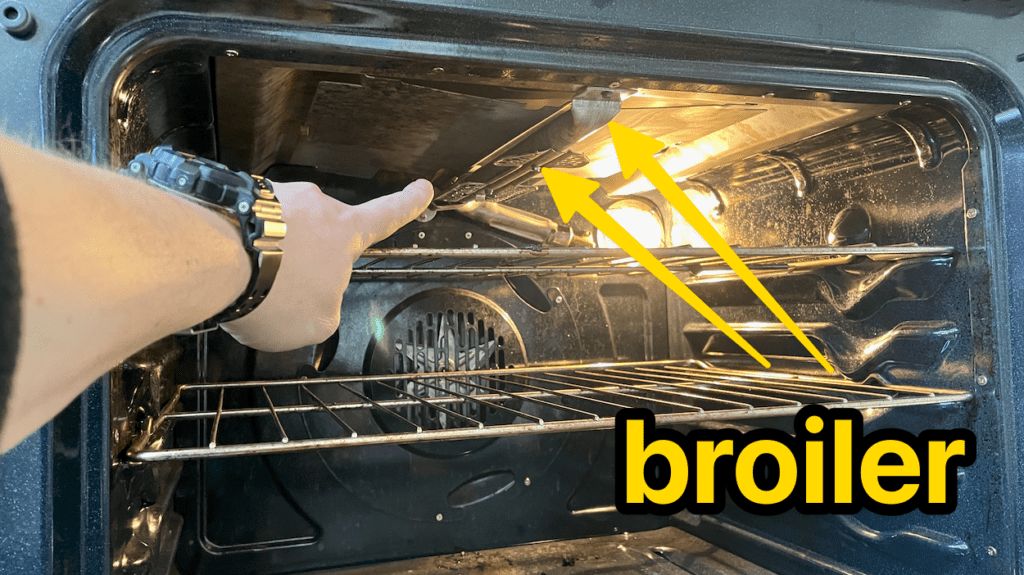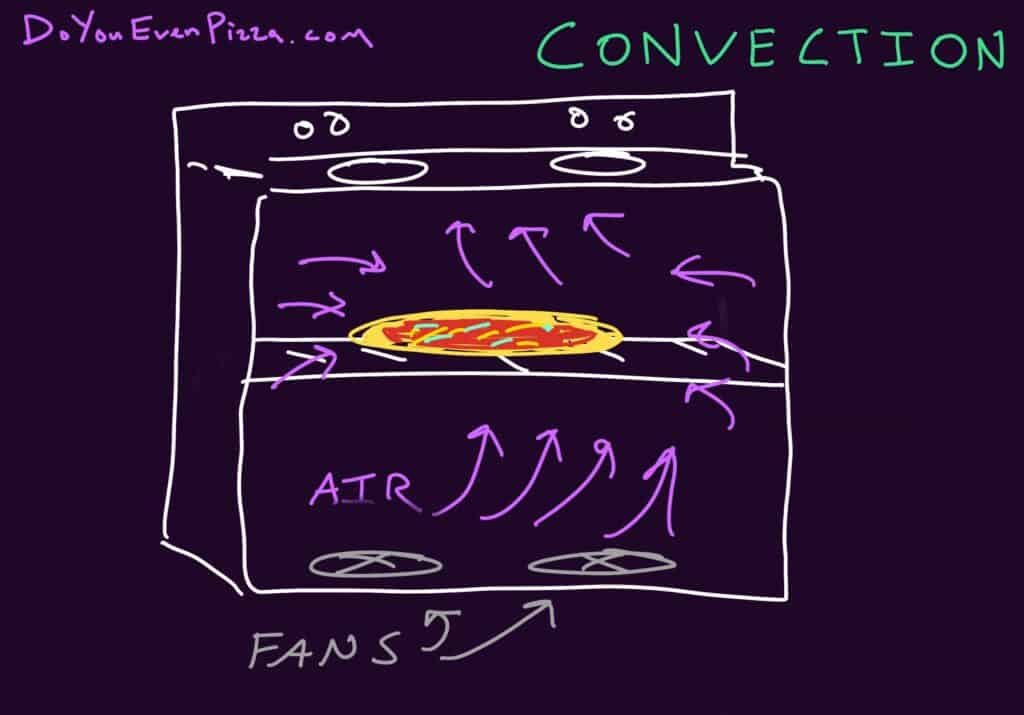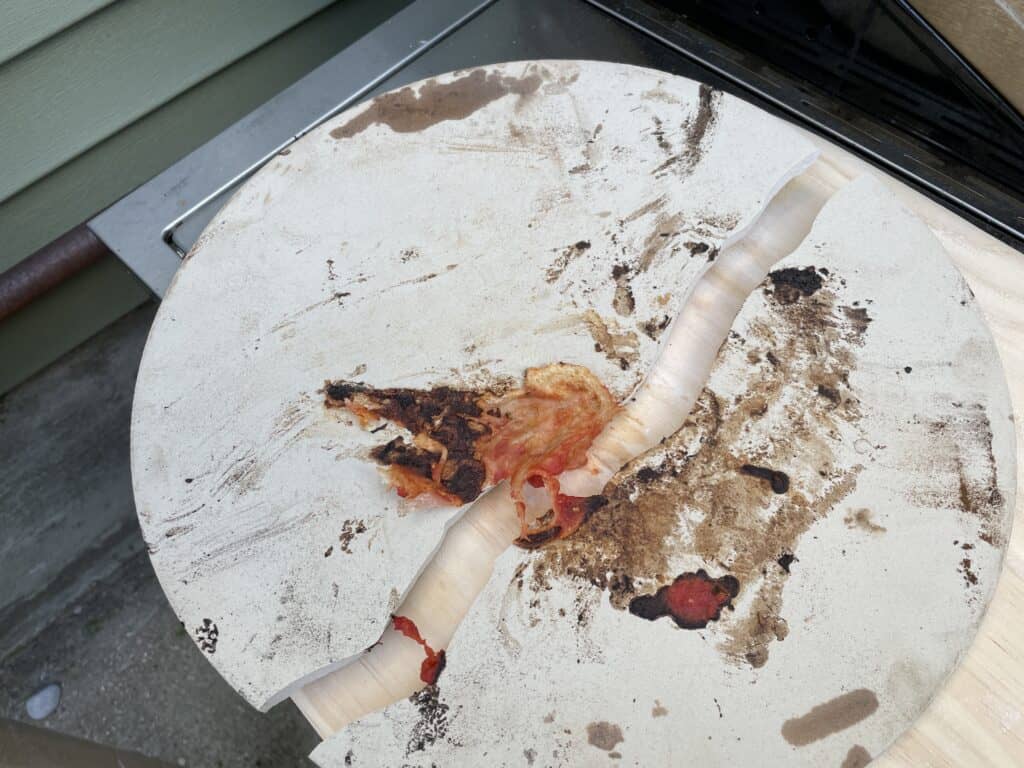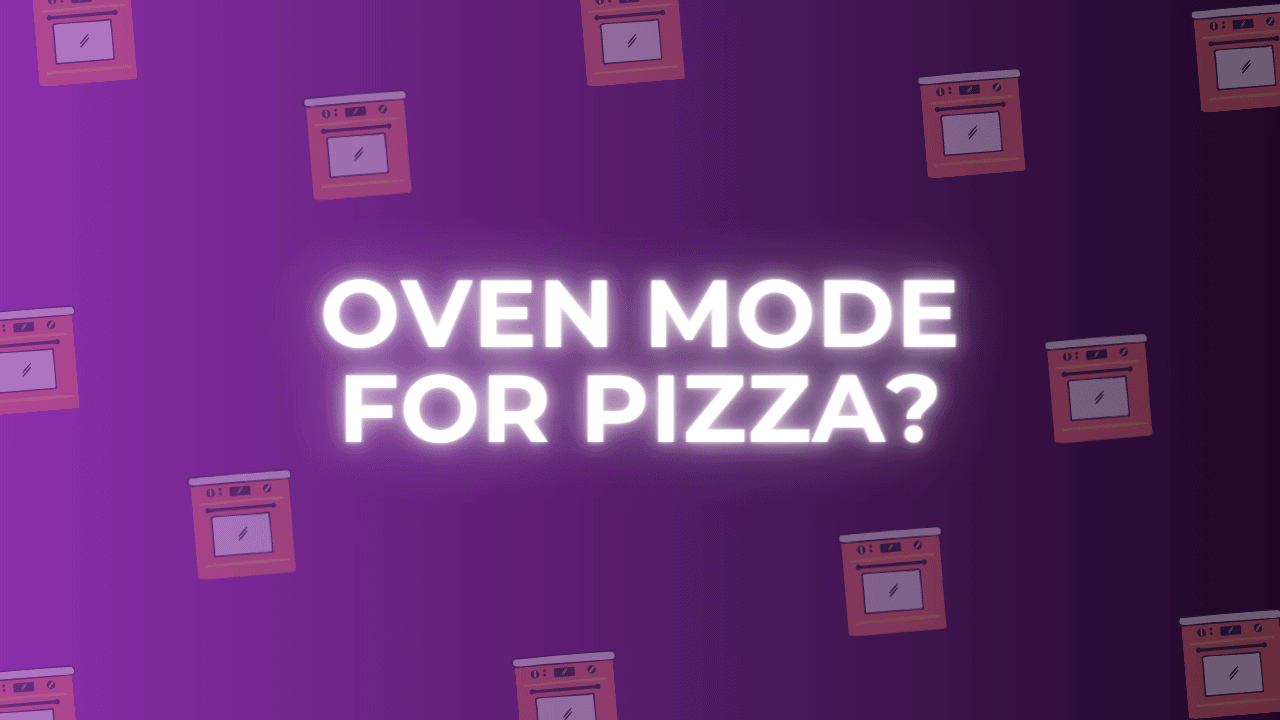Pizza may be the perfect food–and hard to mess up.
BUT…if you’re reading this post, you’re probably looking to bake up some GREAT pizza.
And part of great pizza lies in the small details, like oven modes.
I know, we’re nerds. 🍕
Which Oven Mode is Best for Pizza?
For home ovens (which reach 500-550F degrees), the standard bake mode is fine. However, the convection or broil modes could work better depending on what type of pizza you’re making, and give you more control over the flavor and texture of the crust.
For example, if you’d like to char or brown the top of your crust, you can experiment with using the broil mode on high (either at the very end of the bake, halfway through, or during the entire bake.
I’ve made a lot of pizzas over the years, including in big pizza chains, small pizzerias, and of course at home!
Let’s get into the details so you can select the best oven mode for your oven and your type of pizza 👇
Which Oven Mode Is Best for Pizza?
The best general advice for baking pizza in a home oven is to use the standard bake or convection bake mode (if available).
- Bake only = simple, can’t go wrong
- Broil only = won’t cook/char the bottom of your pie as easily
- Convection = advanced
- Combination of modes = very advanced, but offers more control over the crust you prefer

You could use just the broil mode but you would be trying to replicate a bake mode by moving your pizza far enough from the top heating element to prevent the top from burning while the bottom cooked.
It’s basically a lot of finicky maneuvering for no added benefit.
If you want the broil the top of your pizza, do this as a secondary step after allowing an initial bake.
Pre-heating: The most important thing as far as oven mode is making sure you properly pre-heat your oven using either standard bake more or convection mode, as you prefer.
Bake Mode
The purpose of the bake mode is just to “make a hot room to cook things in.” Not a hot oven only at the top (as with broil) and ideally not just at the bottom.
You need the bottom of your pizza and the inside of the crust to bake before your toppings become overcooked. You also need your toppings warmed or cooked to your liking before the crust burns!
Bake mode is the best (easiest?) way to achieve this in a standard home oven.
Keep in mind:
- Some home ovens have issues due to age.
- Dirty ovens don’t heat evenly.
- Damaged ovens (including from improper cleaning) can unevenly heat.
All of the above can result in “hot spots” or “cold spots” in the oven. This will be unique to your oven and something you need to adjust for.
(Also, clean your oven regularly! See more below…)
Things to try if your oven seems to have issues:
- Buy an oven thermometer, adjust the temperature based on what it says.
- Use a pizza stone.
- Gently clean the oven (vacuum out the bottom of charred debri and wipe up spills. A clean oven leads to more even temperature and the bottom is usually the worst offender).
- Use convection bake.
Convection Mode
The convection mode on your oven means that the air is moving around more (most ovens use a fan and exhaust system to circulate the hot air).

If you have a gas oven, convection is a fantastic choice! A gas oven is a moister cooking environment (which is great for your pot roast but not ideal for baking). The fan that moves the heat around in convection mode creates a drier bake–so it’s recommended for pizza.
Even if you have an electric oven, convection bake is actually more like a traditional pizza oven. It can’t help you achieve higher temperatures, but it can create the most even overall temperature in your oven.
If convection mode is an option on your oven, try it on your next pizza.
Broil
The broil mode uses a “broiling element” located at the top of your oven that pushes immense heat down.
The results from using broil mode are a personal preference, but many pizza lovers will want to implement it to some degree to get their crust extra crispy and charged (and if you prefer caramelized cheese, similar to most NY-style pizzas!)
But, you do not want to use broil only as your oven mode unless you have personal experience indicating this will give you the exact result you want.
- Maybe your oven doesn’t function properly and only broil mode will do.
- Maybe you’re making a thin-crust pizza that will fully bake just with broil (actually this is a great idea.
Generally, just broil mode will result in an under-cooked crust (or at minimum, the bottom won’t be nice and charred).
I recommend switching to broil mode towards the end of your bake (especially for Neapolitan pizza at home).
What about high-temperature pizza ovens?
High-temperature pizza ovens are a totally different beast than your home oven.
First, they are designed for pizza.
They have a low-profile design that should heat evenly around the pizza (and make it easier and faster to heat to 900F degrees). With a hot and cold spot, most pizzas require turning during the bake process (as the intense heat only comes from one spot).
High-temperature pizza ovens are best for Neapolitan-style pizza or pizzas made with 00 flour. Not all flour reacts the same to heat, so sometimes your home oven is better.
Whole wheat flour:
Whole wheat can actually burn at high temperatures, creating an exceptionally acidic flavor for your crust. Pizza isn’t traditionally made with large amounts of whole wheat for this reason. If you’re trying for a healthier whole wheat option, stick with your home oven.
For other types of flour, you can often adjust the temperature of your pizza oven to adapt.
Preheat your pizza oven to high, then turn the temperature down during your bake. You may need to turn the temperature back up between pizzas to reheat the oven properly.
Bottom line: Adjusting the temperature of your pizza oven during baking is a matter of experimentation.
It has everything to do with the pizza dough, toppings, pizza size, and your personal preferences. Luckily making all that pizza is both fun and delicious.
(Here’s a tip, if you’re concerned about excessive burning before the dough finishes baking, start with a small untopped pizza, i.e. a round of dough. Slide it into your fully heated oven to see the result. This is a good idea the first time you try your oven or when you try a new dough/flour type.)
Should I Use a Pizza Stone in My Oven?
Yes! You absolutely should be using a pizza stone in your home oven. Pre-manufactured pizza ovens usually come with a stone, but home ovens almost REQUIRE that you have something that acts as a pizza stone (or better yet, a pizza steel).
A pizza stone is designed to create an intentional hot spot under the crust. In other words, you want the air to be a nice even temperature around your pizza with extra heat (but not too much) under the pizza to bake the crust properly.
No products found.
Without a stone, all those toppings can create a soggy crust. Yuck.
Pizza stones and pizza steels create an evenly hot surface you can’t get from a pizza pan or baking pan–like a cookie sheet.
A pizza pan is a serving dish, not a baking dish. Don’t let frozen pizza fool you into thinking otherwise.
What’s the difference between a pizza stone and a pizza steel?
A pizza stone is a porous stone-like material. Less expensive ones are often ceramic while more expensive (and longer lasting) ones are often cordierite.
Stones are much lighter weight than steel, but far less durable. You must NEVER get a pizza stone wet, as it will break the next time they are heated if they haven’t dried fully. They can retain moisture for much longer than you’d expect.
After breaking every pizza stone I owned, even after avoiding “washing” them, I gave up and switched to baking steel.

Pizza steels (or baking steels) are exactly what they sound like. They are a slab of steel (or possibly other metal) to bake on. They are much heavier than a stone but much easier to clean and very hard to damage. You can also use them to sear things like steak.
Since steels aren’t porous like a stone, cooking other items on them won’t ruin them or affect your pizza (check manufacturer information before cooking other items on a pizza steel as other types of metal, besides steel, might have different uses).
Steels are more expensive than the average pizza stone but cheaper than repeatedly breaking and buying new stones.
Tip: in a pinch, you can use a cast iron pan for pizza if you don’t have a stone or if it breaks on you when you pre-heat it. Pre-heat the cast iron just like a pizza steel and adjust the size of your pizza to fit.
Both a stone and a steel can help you achieve a more even temperature in your oven and will make sure you achieve the proper texture on the bottom of your pizza crust.
Pizza Oven F.A.Q.s
Is it better to cook a pizza in a convection oven or a regular oven?
If you have a gas oven with a convection option, always bake pizza using the convection option. If you have an older oven, or it has damage or is dirty, convection will create a more evenly heated space despite these issues. A regular electric oven should produce similar results to an electric convection oven, though.
Is convection mode used for pizza?
Convection mode evenly heats the interior of your oven using a fan. You want your home oven to have as even a temperature throughout as possible. The convection mode on a gas oven also creates a drier environment which is desirable when baking.
Do you set the oven to bake or broil for pizza?
Using your home oven, pre-heat to the highest temperature with a bake setting. Switch to broil mode part way through the bake time to achieve your desired results on the top of the pizza. When and how long to switch to broil is a personal preference and based on the size and type of pizza, too.
Should I use a fan oven for pizza?
A fan oven is a convection oven. This is recommended for baking pizza in a gas oven and won’t hurt and might even improve results in an electric oven. Your goal with choosing your oven mode is an evenly heated box. You should use a pizza stone and the broil mode to get pizza-oven-like results from that evenly heated box. A fan oven or convection oven is designed to produce even heating so it is a helpful option for pizza-making in a home oven.

